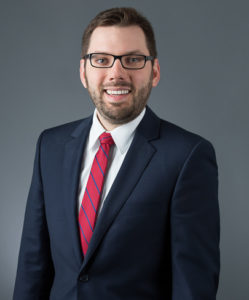Employers that are laying off or furloughing employees during the COVID-19 crisis may be creating the possibility for excise taxes under the Affordable Care Act (“ACA”). Knowing the method by which employers determine full-time status is key to understanding the issue.
Excise Taxes under the ACA
The ACA generally provides that employers with 50 or more full-time and full-time equivalent employees (“applicable large employers” or “ALEs”) have to provide affordable coverage with minimum value to at least 95% of full-time employees, or pay an excise tax known as the “employer shared responsibility payment” or “ESRP.”
Two Types of ESRPs
An employer may be subject to two different types of ESRPs:
- The “A penalty” under Code Section 4980H(a), imposed if the employer fails to make a coverage offer to at least 95% of its full-time employees and dependents, and at least one full-time employee receives coverage through the ACA marketplace using premium tax credits; or
- The “B penalty” under Code Section 4980H(b), imposed if the employer fails to make an affordable offer of coverage to a full-time employee, and that employee receives coverage through the ACA marketplace using premium tax credits.
For 2020, the annual penalty amounts are $2,570 per employee for the A penalty and $3,860 per employee for the B penalty. These penalties are pro-rated and imposed on a month-to-month basis.
Determining Full-Time Status: Monthly or Look-Back Method
IRS regulations under the ACA allow for two methods for employers to determine which employees are full-time for purposes of offering coverage. Every ALE must use one of the two methods.
The first method is the monthly measurement method. Under this method, an ALE determines each employee’s status as a full-time employee by counting the employee’s hours of service for each calendar month. This method is simple for employers that have a clearly full-time or clearly part-time workforce, but is a problem for employees near the margin, or whose hours are variable, because the employer will only know an employee’s full-time status and that an offer of coverage was required for the employee after the month ends.
The look-back method is a frequently used alternative, using a prior measurement period to measure the full-time status of the employee, and a subsequent stability period during which the employee retains full-time status, regardless of hours worked during the stability period. Typically, the measurement period will end in conjunction with open enrollment, and the stability period will run the duration of the group health plan’s plan year.
Layoffs and Furloughs
Employers which use the look-back method and lay off or furlough (but do not terminate) employees who are treated as full-time during a stability period must remember that the affordable offer of coverage rules continue to apply to employees for the duration of the stability period.
If an employer does not make an affordable offer of coverage to those employees, a B penalty may be triggered if the employees obtain subsidized insurance on the ACA marketplace, and an A penalty may be triggered to the extent that 95% of full-time employees are not offered coverage and at least one full-time employee obtains subsidized insurance on the ACA marketplace.
To avoid ACA penalties, employers may wish to consider subsidizing or instituting a premium holiday for employees on layoff or furlough to ensure that affordable coverage continues to be offered. Alternatively, if an employee is terminated, no penalties will result from a month in which an employee is not employed. An unsubsidized offer of COBRA coverage will generally not be considered affordable under the ACA.
This post is a part of the All Things HR Blog’s multi-part series on frequent issues and questions faced by employers during the COVID-19 crisis.
Read Part 1: Federal Agencies Relax Summary of Benefits and Coverage (“SBC”) Disclosure Deadlines
Read Part 2: Temporary Expansion of Educational Assistance Programs to Cover Employees’ Student Loan Debt
About the Author
Eric W. Gregory is a Member in Dickinson Wright’s Troy office where he assists clients in all areas of employee benefits law, including qualified retirement plans, welfare plans, and non-qualified compensation programs. Eric can be reached at 248-433-7669 or egregory@dickinsonwright.com and you can visit his bio here.

